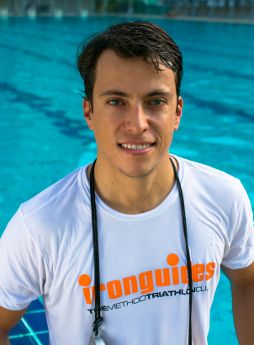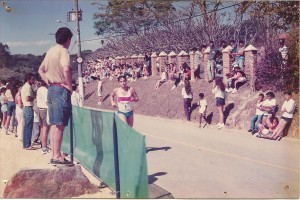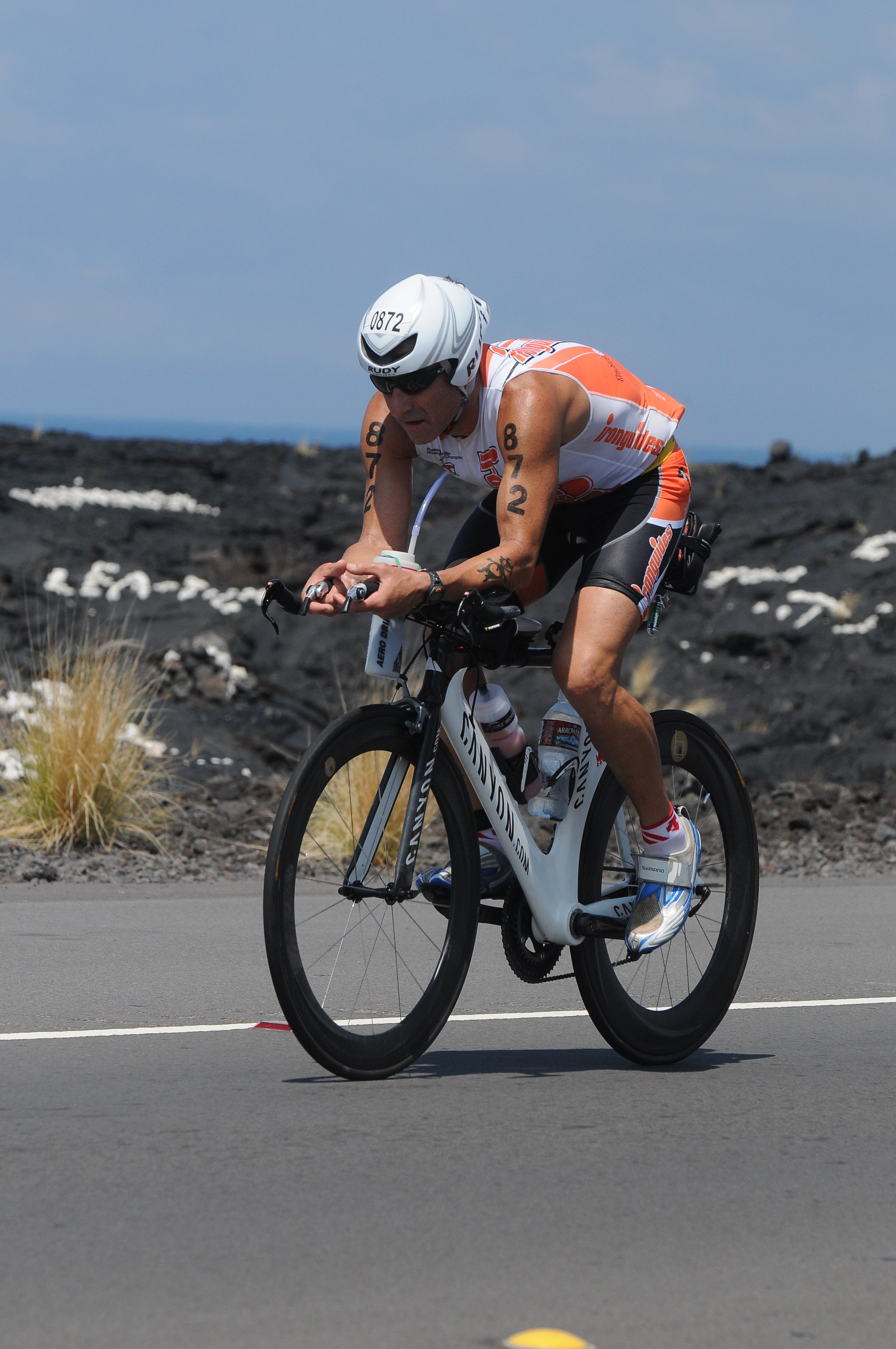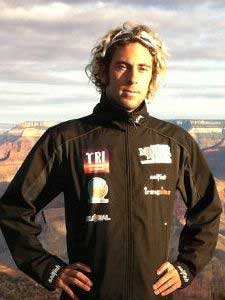Our Head Coach and former professional triathlete Vinnie Santana shares with you the secrets of a course he knows well. While Ironman Fortaleza, Brazil, has only just been announced Vinnie won an Ironman-distance event in Fortaleza back in his professional racing days.
A second Ironman race in Brazil was announced this week: the location is Fortaleza in the north east of the country and the date is November 9, 2014. The new race was announced by Latin Sports and published by Brazilian triathlon website mundotri, the event management company that has been running Ironman Brazil since 2001.
I’ve raced and won an Ironman-distance event (non Ironman brand) back in 2006 and it was to this date the most difficult race I’ve done among some other challenging courses including Kona and Korea. The article below will help you understand what to expect and how to get ready for this brand-new Ironman event.
Unlike the current Ironman in Brazil in Florianopolis, you can expect a palm-tree, hot-weather, tropical-feel type of event. Be aware as well that Fortaleza and its neighbouring towns are known globally as one of the best kite-surfing spots in the world; in other words it translates to possibly the windiest ironman race on the planet.
Wind tunnel conditions with the temperature of a sauna, this is Ironman Fortaleza.
While those conditions may not be appealing for athletes who want to PB over the Ironman distance, if you understand how to make the most of them, you will have a great experience and may place ahead of many of your competitors, especially those who are better suited to cooler climate events in locations that are far less windy.
Experienced Athletes
If you are an experienced ironman triathlete, you can expect a total finish time that is about one hour slower than on the traditional faster courses, where the winners typically come in between 8h10 to 8h30
The race I won in Fortaleza in 2006, I took 9h47 and that was coming off an 8h52 only four months earlier at Ironman Brazil. Be very conservative with your goals regarding time improvements and PBs when coming to Ironman Fortaleza.
Which athletes will do well on this course?
A runner who can handle the heat. This will be the difference between a decent race and a great race. If you can run a fast marathon off the bike in Fortaleza without walking (except through aid stations), you will place you very nicely in your age group.
Being a decent swimmer will also be more relevant here than in other races since the water temperature will likely be too high for a wetsuit swim. On the bike, aerodynamics will be of a great importance due to the wind factor, especially when it comes to bike fit; being able to also generate a high power to weight ratio will be key in this race. Show up lean, fit and ready to handle tough conditions and you will do well.
Let’s look into each discipline in more detail below.
Kona Slots
If you are chasing an opportunity to qualify for Kona, and you fit the description above, this could be your ticket. Unlike most other, faster races where any mistake or mishap can cost you that Kona slot, in a race like Fortaleza this is more unlikely to happen since it’s not so much a matter of “racing the man” but more a “racing the course” type of event. You may have a slow swim, get a flat on the bike, but if you can pull out a fast marathon, you are still very well in contention for a Kona slot, especially as — typically — age group triathletes aren’t fast runners.
If your goal is a Kona slot, I suggest you ignore what your competition is doing and face this as an individual time trial. Take all decisions based on the goal of getting to the finish line as fast as possible, and be patient if you need to give up a few minutes at various points during the race if that means you will save another dozen later on.
Getting used to the heat
Be careful when trying heat acclimation techniques. Understand that your main goal in training for this event is to be consistent — doing things like running at the hottest time of the day, or training indoors in cold-weather clothes may hurt your ability to stay consistent for days.
Also, your ability to handle heat is something that you don’t fully control. Some athletes are genetically gifted to handle the heat better than others, regardless of where you come from or train at.
Traveling
If you are coming from overseas, there are a limited number of direct flights to Fortaleza but they are worth it, since flying from Rio de Janeiro or São Paulo can be challenging as you will need to stop in Brasilia and there are only so many flights at reasonable hours. It’s not uncommon to board flights in the very early morning hours (1-2am) in São Paulo to make it to Brasilia before you get to Fortaleza. Study your itinerary and options carefully.
When in Fortaleza, make sure your accommodation provides you air conditioning in all rooms as some of the hotels can be basic. Stay out of the sun and avoid running between 9am-5pm at all costs as that it will take a lot out of you. Instead, stay in the AC and run early or late in the day.
Swim
Likely a non-wetsuit swim, with very choppy waters. You may want to train specifically for those conditions both in terms of technique and fitness. We like to use traditional pull gear such as paddles, pullbuoy and ankle bands to add a higher strength load to swim training.
Technique wise, aim for a higher stroke rate and higher hands on your recovery, because this is the most efficient way to swim in choppy waters.
Cycling
While the specific course hasn’t been announced, we can expect a lot of wind — it will be strong regardless of the direction. In terms of the course profile, it will be relatively flat with some rolling hills thrown into the mix but no major climbs.
I remember from the race I did back in 2006 that the last 40km were brutal with a very strong head wind and smaller climbs, — you want to be ready for all sort of conditions, ready to tap into your strength when the legs are already deeply fatigued.
Pacing also becomes an important part of the equation. If this will be a two-loop course, it’s unlikely the wind direction will change, so pay attention to what you deal with on the first lap and expect the effort to increase on the second lap.
In training, you will need to do a lot of strength work pushing big gears, both at the end of your long sessions and also throwing in smaller sets in the middle of your rides, to simulate the conditions of the race.
It’s important to learn how to ride with all cadences since you want to maintain a good momentum both in a tailwind and headwind situation.
Road conditions can be very, very rough!
Choose your equipment carefully, especially those that can impact you negatively in windy conditions, such as disc wheels. I wouldn’t be surprised if the organizers decide to ban the use of discs on race day. I would also recommend you ignore all wind tunnel recommendations when it comes to hydration and go with what will allow to best stay fueled: I used a Camelbak in 2006 and it was a great choice!
Run
Your goal for this marathon is to slow down the least! Your training and race day strategy should be based on that.
Walk every aid station to make sure you get enough fuel and electrolytes — a few seconds lost in each of those stations may save you several minutes if it helps you avoid bonking.
Aim to run with a faster stride rate, a more efficient technique in warmer conditions that will bring slower marathon times. If you can do a quick shuffle, you will build a “bonk-proof” run style.
Be also careful with your run training: doing a lot of speed work, while it does build general fitness, is not too specific and won’t help much on race day, the priority of your training should go to where it really matters for this day, as listed in this article.
And finally, be very patient on race day: while the course conditions will be extremely challenging, this also creates a great opportunity for those that can understand and play with it!
—

Vinnie Santana, Head Coach
http://www.ironguides.net
* * * Your best is our business.™ * *











 Alun ‘Woody’ Woodward, Certified ironguides Coach – UK/Hungary
Alun ‘Woody’ Woodward, Certified ironguides Coach – UK/Hungary
Recent Comments